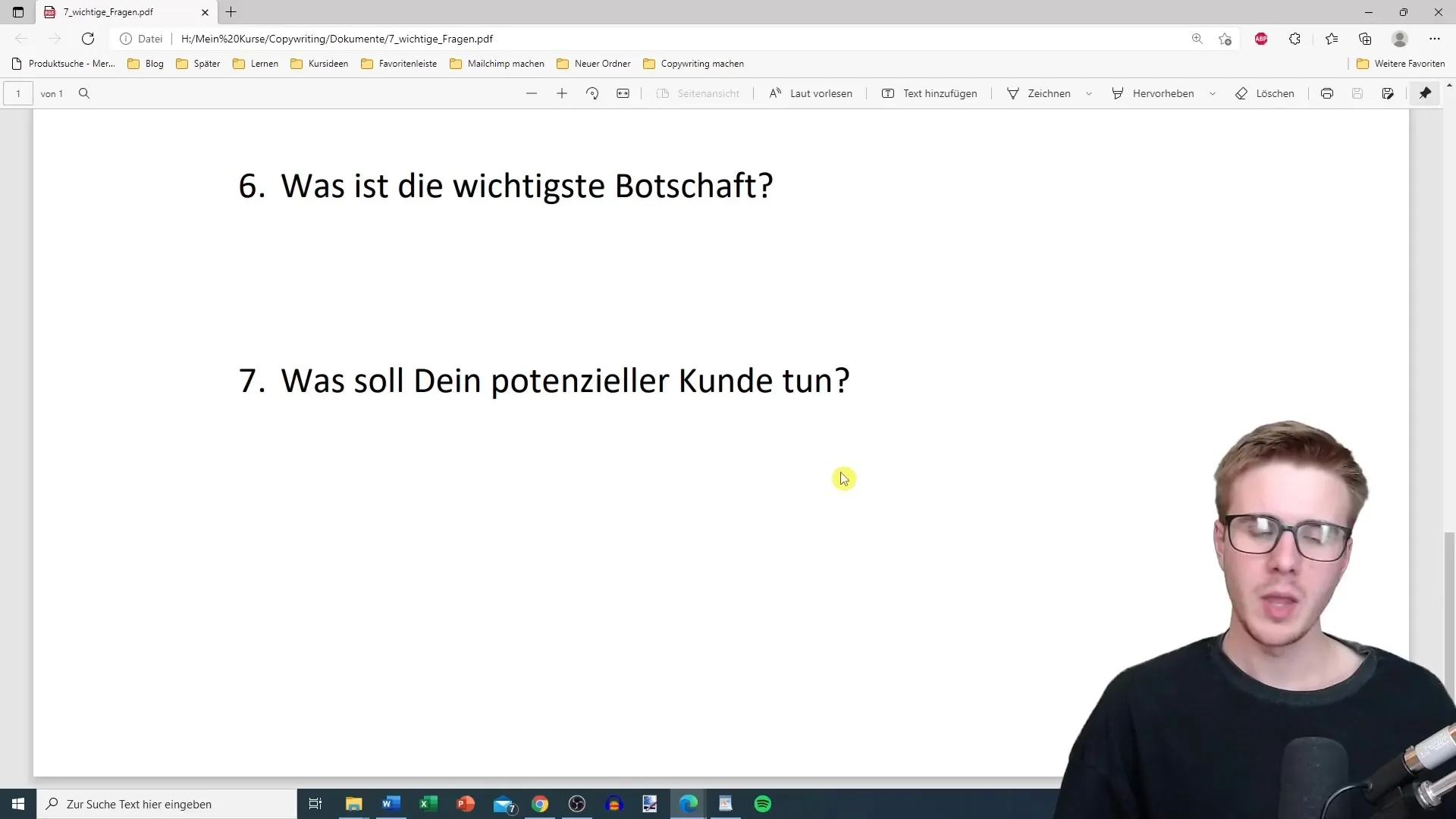Every effective copywriting starts with thorough preparation. Before the actual writing process, it is crucial to ask yourself some fundamental questions and answer them clearly. Below you will find out which seven questions are essential to optimize the writing process and increase the success chances of your text.
Key Insights
- Preparation is the key to successful copywriting.
- Clear answers to the questions help create relevant and engaging content.
- A thorough analysis of the target audience is essential.
- Transforming benefits into customer value is the heart of your text.
Step-by-Step Guide
1. What are you selling?
Before you start writing, it is important to know exactly what product or service you are offering. Instead of using vague terms like "cell phone," be specific: "A smartphone that is waterproof, charges quickly, and comes from a reputable manufacturer." These details help you better outline the customer benefits. Knowing the advantages of your product allows you to address how these meet the needs of your target audience.

2. Where are you selling?
The platform on which you present your product plays a crucial role. Is it a blog article that serves as supplementary content, or a specific landing page focused on sales? The strategy you follow may vary: on a landing page, you can make more aggressive sales promises than in an informative article. This consideration should influence your writing style and how you address your target audience.
3. To whom are you selling?
A precise target audience analysis is indispensable. Create a persona - a detailed profile of your ideal customer. Consider their age, income level, interests, and lifestyle. Use this information to adjust your text accordingly. For example, if you know that your target audience is primarily well-off, tech-savvy younger people, you can formulate messages that better reflect their needs.
4. Why should people buy?
Here it gets interesting. Your answer to this question should not only focus on the product's benefits but also on the specific needs of your target audience. Transform features into concrete customer benefits. For instance, if your product is waterproof, consider how relevant this feature is for your target audience. While this advantage may not be crucial for everyday use, it could be vital for outdoor enthusiasts.
5. Who is the competition?
Analyzing your competitors is a often underestimated step. Identifying direct competitors and their strategies can provide valuable insights. For example, if you're in the smartphone industry, you could examine Apple's website to see how they position their products and incorporate those insights into your own strategy. The differences in price and features must be clearly outlined to find your own niche.
6. What is the key message?
This is the central message you want to convey to your customers. It can range from a concise slogan to a comprehensive corporate philosophy. Think about which aspects should appeal to your customers and formulate them simply and clearly. For example: "With our products, we protect the environment." Such messages should always be prominent in your writing while presenting the various benefits.
7. What should your potential customer do?
Every text should contain a clear call to action. Define whether you want the customer to sign up for your newsletter, purchase the product directly, or just gather information. This decision affects the overall structure of your text. Note that the call to action must be clear and context-appropriate. An inappropriate call to action can give the impression of an unstructured concept.

Summary
The seven aforementioned points are crucial to refine your copywriting. Take the time to answer these questions for each project to achieve the best results. A solid foundation in preparation is the key to a successful text.
Frequently Asked Questions
What is Copywriting?Copywriting refers to writing texts with the aim of selling products or services.
How long should it take to answer these questions?Generally, you should invest about 10 minutes to precisely answer all seven questions.
How often should I ask these questions for new projects?For every new task, you should ask yourself these questions to ensure that the text is well-aligned.
Why is target audience analysis important?Target audience analysis helps understand the needs and motivations of your customers, influencing the tone and argumentation in the text.
How can I determine what exactly I want to sell?Define your product in detail and consider its specific features and benefits to the customer.


